What can we do to continue our progress to decarbonization?
 In 2015, 196 countries came together at the United Nations Climate Change Conference in Paris and reached an agreement to limit global warming to an average of 2ºC above pre-industrial levels, and also “pursue efforts to” limit the increase1.5ºC.
In 2015, 196 countries came together at the United Nations Climate Change Conference in Paris and reached an agreement to limit global warming to an average of 2ºC above pre-industrial levels, and also “pursue efforts to” limit the increase1.5ºC.
It was the 21st annual session of the Conference of the Parties (COP21) to the 1992 United Nations Framework Convention on Climate Change (UNFCCC) and the 11th session of the Meeting of the Parties (CMP) to the 1997 Kyoto Protocol. This historic agreement was due to become effective once 55 or more nations, together representing a minimum of 55% of global greenhouse gas emissions, joined – a target reached on November 4, 2016. By April 22, 2016 (Earth Day), 174 countries had signed the agreement in New York, and began adopting it within their own legal systems (through ratification, acceptance, approval, or accession).
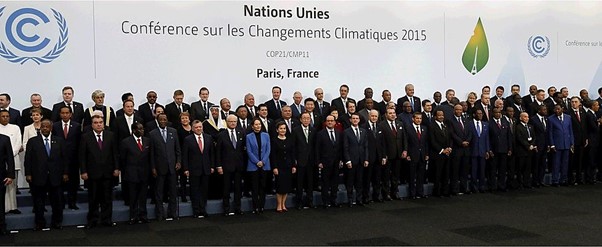
To achieve this aim, climate scientists agreed that the concentration of carbon dioxide in the atmosphere must have stopped rising – so net zero anthropogenic greenhouse gas emissions to be reached in the second half of this century. sometime between 2030 and 2050. If carbon emissions growth is halted by then, the current modelling indicates that global warming may potentially stay within the 2ºC upper limit.
 The International Energy Agency (IEA) subsequently published a detailed plan[1] the world could follow to achieve this target. It lays out more than 400 milestones ranging from home insulation to carbon capture and, perhaps most importantly of all, the generation of electricity and its distribution.
The International Energy Agency (IEA) subsequently published a detailed plan[1] the world could follow to achieve this target. It lays out more than 400 milestones ranging from home insulation to carbon capture and, perhaps most importantly of all, the generation of electricity and its distribution.

In electricity generation, fundamental change must happen, and happen quickly, for these milestones to be met. Currently, energy consumption is by far the biggest source of human-caused greenhouse gas (GHG) emissions, responsible for 76% worldwide[2]. The energy sector includes transportation, electricity and heat, buildings, manufacturing and construction, fugitive emissions and other fuel combustion. Within the energy sector, heat and electricity generation is responsible for around 32% of total GHGs.

In the IEA plan, unabated coal power plants are to be phased out of first world countries by 2030. More than a terawatt of solar and wind power capacity is to be active by the same year, with a huge expansion in renewable capacity running all the time. By 2035, power generation must reach net zero emissions in developed countries and sales of internal combustion engine must cease. Solar power is to generate 70% of the world’s electricity by 2050 – a target towards which I’m proud to say renewable energy leaders like our flagship renewables business FRV, part of Abdul Latif Jameel Energy, are already showing the way.
It’s a highly ambitious roadmap but, crucially, it does not depend on some miracle new technological breakthroughs swooping in to rescue us. The energy technologies needed to enable us to reach these targets are already in use around the world to varying degrees, today! Governments are urged to increase their spending on research in areas such as battery storage systems, wind, solar and wave power generation, and safe nuclear power, but there is no completely new, untried type of technology mentioned in the report.
One thing is clear though: every process that can be, should be electrified. Electricity generation capacity must be transformed to produce even more energy than it does now, in a carbon-neutral way; and the grid itself must undergo deep change if that power is to be delivered consistently whenever and wherever it is needed.
Promising progress – so far…
Much progress has already been made in reducing emissions, but we are entering a new phase that will require careful thought and concerted action. The UK, for example, has reduced its emissions by 44% since 1990, while growing its economy by 75%[3]. But we are now running out of room for improvement without a fundamental change in the technologies we use every day at home, in transport and in industry.
Improvements so far have mostly been achieved through efficiency, rather than radical change. Fossil fuels are still very widely used for heating, transport, electricity generation and heavy industry. Conversion to electric cars and heating without modifying the ways the electricity is generated will increase the yield from the same amount of fuel but could potentially place greater strain on the grid.
If we do not reform at the point of generation, we are at risk of running our clean tech on dirty power.
The energy used by buildings accounts for 27% of global carbon emissions. Currently, more than half of the emissions of an average domestic home in the US do not come from electricity, but from gas used for central heating and hot water. Converting the world’s boilers and radiators to electric systems such as ground- and air-source heat pumps offers a great opportunity to increase efficiency, but more importantly, it is the only way that domestic consumption can become carbon neutral.
Electric boilers are more efficient than gas, but simply moving the carbon emissions back up the chain to fossil fuel-fired power stations will not take us to net zero.
Storing up solutions
The IEA roadmap names wind, solar and nuclear as the main sources of low-carbon power. Countries such as Norway also make considerable use of hydro-electricity, and Iceland geothermal power, but not every country has access to such hydro-friendly mountainous terrain nor subterraneous heat.

Although the wind and the sun have been used to generate a great deal of power already – 19% of energy in the EU in 2021 came from these sources[4] – they are, by their very nature, intermittent. To cope with this slower, but steadier and cleaner mode of generation, power must be stored. Long-term storage of power is still some way off, technologically, but there is already a great deal available in local batteries, both in static installations and in cars.
Cheap renewable power produced at very windy periods of the night, for example, when there is little demand but still a great deal of capacity for wind turbines to produce it, can be stored at an individual household or small community level and used when required.
Electric cars sit unused for most of the day and offer a readily accessible form of mobile storage. Plugging an electric car into the grid does not create any new power, but the car battery can provide storage and can release the stored energy at peak times, thus reducing the need to install as much extra generating capacity. When the car itself is worn out as a form of transport, the battery will still have most of its original capacity and can be recycled into a home installation.

 Rather than be a strain on an old-fashioned grid, cars become an asset to modern infrastructure. A trial in the UK backed by the Department for Business, Energy and Industrial Strategy found that a single electric vehicle could power 100 homes for one hour[5]. Studies have shown that flexible tariffs, EV adoption and smart grid management can reduce peak demand by almost a quarter[6].
Rather than be a strain on an old-fashioned grid, cars become an asset to modern infrastructure. A trial in the UK backed by the Department for Business, Energy and Industrial Strategy found that a single electric vehicle could power 100 homes for one hour[5]. Studies have shown that flexible tariffs, EV adoption and smart grid management can reduce peak demand by almost a quarter[6].
Home batteries would assist even further.
Large community batteries provide larger scale solutions. Most of these are in the form of arrays of lithium ion cells – like the three utility-scale battery storage projects being developed by FRV-X and Harmony Energy in the UK – or bodies of water pumped to raised positions with available solar-powered pumps, then released when power is required.
Sand batteries could soon be added to this list of energy storage options[7] – huge superheated insulated hoppers of sand that can maintain their heat for months – along with emerging technologies like hydrogen gas stores[8].
Taking control of your power
Even in countries without a great deal of sunshine, such as in northern Europe, the repayment period for home solar panel and battery installations – the amount of time it would take to generate enough electricity to cover the purchase price – is estimated to be between 10 and 15 years, with the panels guaranteed to last for 25 or 30[9]. In sunnier countries such as Spain, Australia or across the Middle East and Africa, the time taken would be far less. High retail energy prices bring that repayment period down even further.
A home with average-sized solar panels and domestic batteries reduces its strain on the grid by a third. Larger installations for apartment blocks and small communities can be even more cost efficient and effective.
Working together
Community schemes to take advantage of locally available sources of power and reduce bills are nothing new. District heating plants were in use in Dresden and Hamburg, Germany by 1900[10], with huge oil-fired boilers supplying heat to homes and public buildings directly through heavily insulated pipes, at a much lower cost than individual systems.
To take a more recent example, Microsoft and their partner Fortum, announced in March 2022, that heat removed from its data centers near Stockholm, already powered by zero carbon electricity, would be used to warm nearby houses and schools[11].
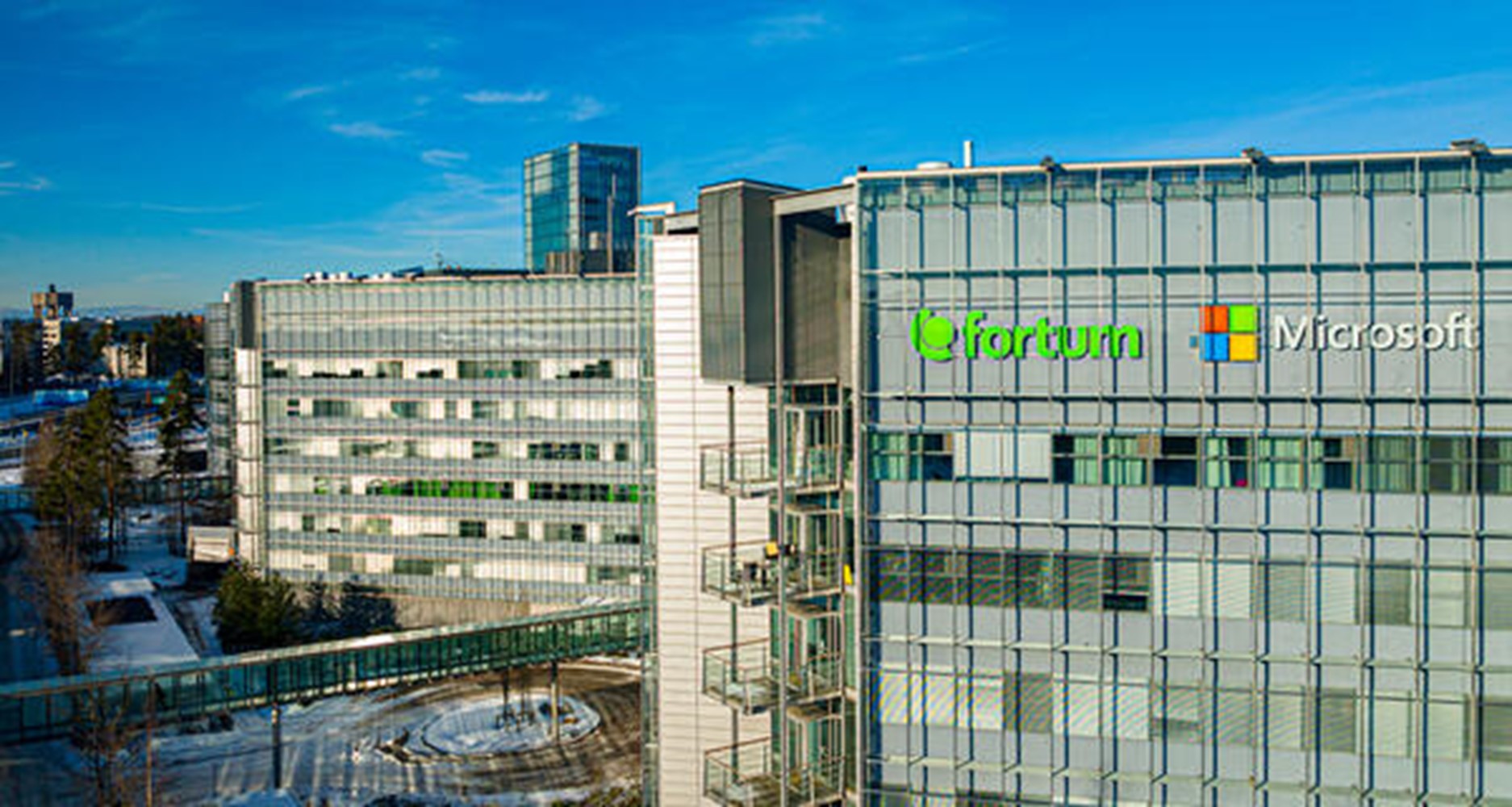
The Chartered Institution of Buildings Services Engineers estimates that 14% of heating and hot water in the UK could be supplied by waste heat from industry,[12] a significant cut in the amount of power that would need to be generated.
Neighborhood-funded solar and wind facilities are already being used to power developments whose planning approval was dependent on their carbon neutrality. The use of private wire networks, small independently run micro-grids within the larger national grid, ensure that power generated locally is used to benefit local homes and the larger grid becomes easier to manage.
Transport goes electric
Electric vehicles (EVs) are an essential part of the overall plan to stop burning fuel and reach carbon neutral. Norway leads the world in its electric vehicle charging infrastructure. There are 4,600 rapid chargers in a country of a little over five million people[13]. Compare this with similarly sized Scotland which has less than 700[14]. Consequently, 73% of new cars in Norway are powered purely by batteries[15] and, combined with Norway’s almost zero-carbon electricity grid, are a truly low carbon form of transport.

Charging companies such as Gridserve in the UK are already incorporating large solar farms into their plans for electric vehicle charging hubs in the knowledge that they require more power than the current grid would be able to provide. Its largest solar park generates nearly 10GWh of power per year, which is fed directly into the battery farms that regulate supply for their fast chargers.
Net zero at work
The disruption that would be caused by catastrophic climate change is now being recognized as a serious business issue, demonstrated in part by the increasing focus on the environmental, social and governance factors in business performance. Global supply chain uncertainties caused by the COVID-19 pandemic have already caused shortages of microchips, ammonia fertilizer and petrol,[16] and assumptions that business can continue unaffected by challenges elsewhere have been firmly overturned. Businesses of all sizes and across all sectors now recognize they have a critical part to play in decarbonization.
Commercial applications – shops, offices, hotels and business logistics – account for 20% of total electricity demand, and many of the same techniques that have been successful in the home setting can be used to reduce emissions here. Roof space on commercial buildings is often very large and unused, offering great potential for solar, especially in lower energy sectors such as warehousing or car parking.
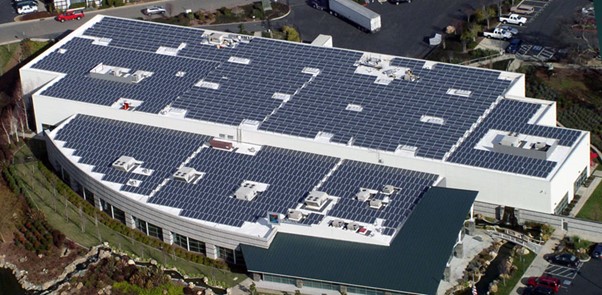
As EVs become more popular, the grid’s requirements for commercial charging hubs will increase, and smart solutions will be required to regulate pressure on the grid. As charging will mostly take place at night away from peak domestic demand hours, but also when the sun is not shining, local storage solutions will have to take the strain, trickle charging either from centralized wind and solar farms or on-site rooftop installations, then recharging batteries when the workforce is away.
This model represents not only a huge carbon saving but an even greater saving in running costs. McKinsey estimates that EVs represent a 15%-25%[17] saving over the lifetime of the vehicle, purely using grid power. Business that generate their own electricity and use it to charge their EVs will save even more.
A smarter grid
Smart meters can already inform consumers about the costs of their energy habits, but their potential is even greater. Connected to smart tariffs, they can be the key to decarbonizing the grid while also saving money for consumers and optimizing the load when renewable generation is at its peak.
Smart tariff-enabled homes can feed energy into storage devices such as hot water tanks, static batteries and EVs when green power is plentiful and cheap – sometimes even paying consumers for storing energy and helping to balance the grid – then rely on those stored resources at peak times. This cuts the need for expensive, polluting but fast-reacting power generation, such as gas-fired turbines, to kick-in when demand ramps up.
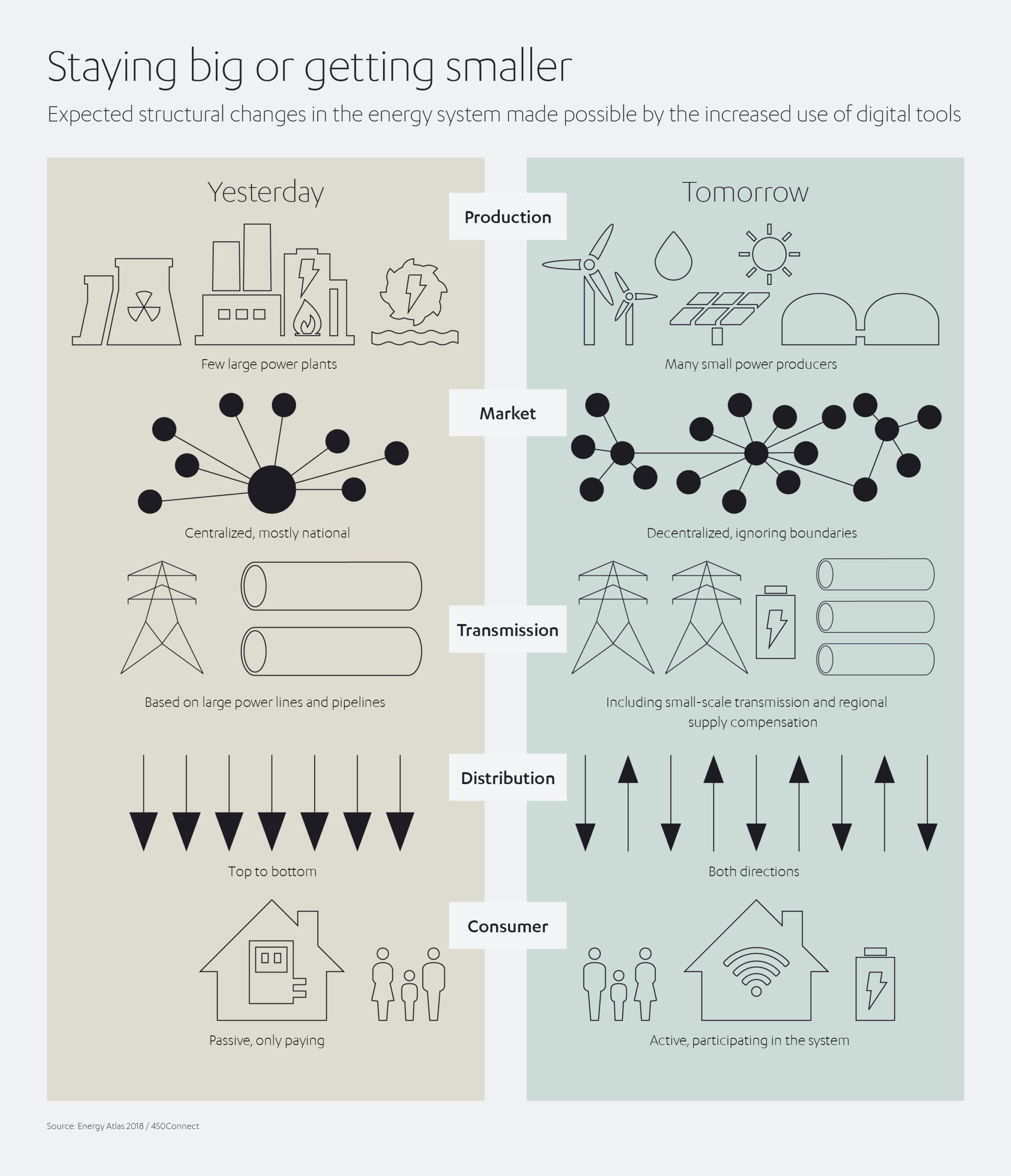
Fully connected meters and chargers can even balance the load across a community, ensuring that everyone has charge when they need it, but greatly reducing the load on the grid throughout the night by supplying houses in sequence rather than all at once. This could help to flatten out ‘timer peaks’ that occur when individually timed chargers all fire up at the same time when traditional tariffs enter their off-peak charging period.
Save money, live independently, help the climate
Across the spectrum of new green technology, the story repeats: initial outlay might be higher, but the result is a lower running costs and lower peaks in demand using micro generation and local storage.
The consequences for our planet will be dire if climate change is allowed to continue unabated. Even without the apocalyptic disasters predicted by some projections, a world run on cleaner, cheaper, quieter renewable energy and electric transport would still be hugely preferable.
In addition to the economic advantages, the need for centralized power generation is lessened, pollution is decreased, and energy security is strengthened. Energy is a fundamental good for every country in the world. The more of it we can generate for ourselves, the less we are put at risk by geopolitical instability.
It’s not too late to act
Climate change and the 2ºC limit envisioned in the Paris Agreement are no longer distant threats. They are the daily reality for much of the world and will very probably cause considerably more disruption over the next three decades.
Crop failure, extreme weather, floods, droughts, enforced migration and food and water scarcity causing famine at worst and price inflation at best, are all more likely than not to happen.
Beyond the 2ºC mark, few scientists are willing to model what the climate will be like. Fortunately, we are not yet at the point where they have to.
But if we don’t act decisively, the graphics from the UNFCCC below provide a frightening glimpse of the possible scenarios.
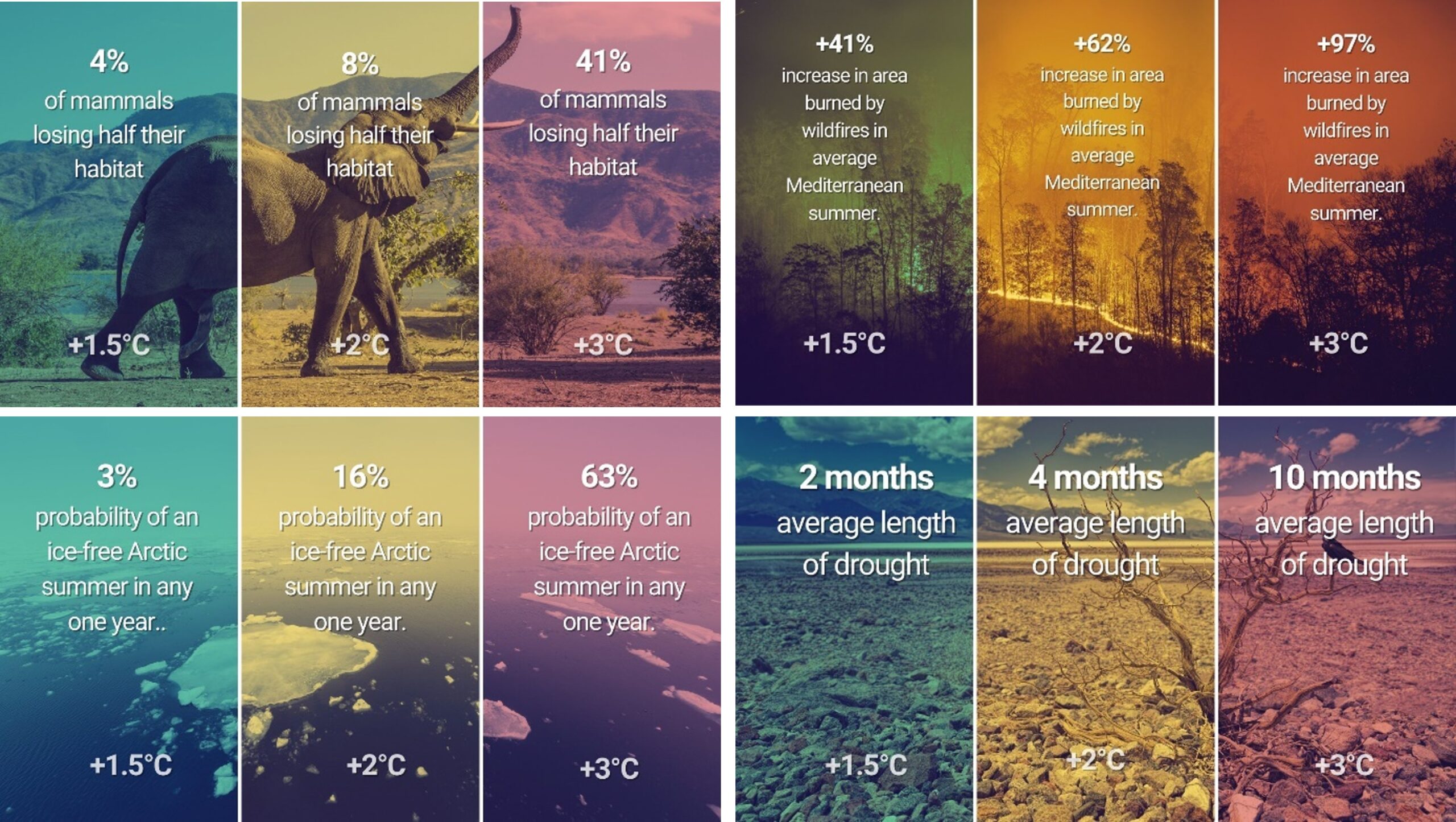
The roadmap to net zero by 2050 is ambitious, but I truly believe it is achievable, with political will and global cooperation. Conversion of heating, industrial processes and transport to electrical alternatives and the decarbonization of the electricity grid itself are all within our reach.
That doesn’t just mean power stations. Home solar installations, commercial and domestic energy storage, workplace generation, community heating, waste heat recovery, smart grid balancing, vehicle to grid provision, smart boilers and pro-efficiency tariffs all have vital roles to play in achieving the zero-carbon future we must achieve by 2050.
The future must and can be clean, safe, non-polluting and economically viable. And with cooperation and action, it can be realized.
[1] https://www.iea.org/reports/net-zero-by-2050
[2] https://www.wri.org/insights/4-charts-explain-greenhouse-gas-emissions-countries-and-sectors
[3] https://assets.publishing.service.gov.uk/government/uploads/system/uploads/attachment_data/file/1033990/net-zero-strategy-beis.pdf
[4] https://ember-climate.org/insights/research/european-electricity-review-2022/
[5] The Sunday Times, 21 August 2022.
[6] https://www.nationalgrideso.com/news/domestic-flexibility-could-reduce-peak-electricity-demand-23-new-study-shows
[7] https://www.bbc.co.uk/news/science-environment-61996520
[8] https://www.sciencedirect.com/science/article/pii/S0360319919310195
[9] https://www.nrk.no/norge/interessen-for-solenergi-oker-_-sa-lang-tid-tar-det-for-det-blir-lonnsomt-1.15660232
[10] https://www.sciencedirect.com/topics/earth-and-planetary-sciences/district-heating-plant
[11] https://www.fortum.com/media/2022/03/fortum-and-microsoft-announce-worlds-largest-collaboration-heat-homes-services-and-businesses-sustainable-waste-heat-new-data-centre-region
[12] https://www.cibsejournal.com/technical/wasted-opportunity-using-uk-waste-heat-in-district-heating/
[13] https://elbil.no/english/norwegian-ev-policy/
[14] https://www.gov.uk/government/statistics/electric-vehicle-charging-device-statistics-october-2021/electric-vehicle-charging-device-statistics-october-2021
[15] https://ofv.no/bilsalget/bilsalget-i-mai-2022
[16] https://www.imperial.ac.uk/stories/global-supply-chain-crisis/
[17] https://www.mckinsey.com/business-functions/sustainability/our-insights/charging-electric-vehicle-fleets-how-to-seize-the-emerging-opportunity
Cartoon image illustrated by Graeme MacKay





 1x
1x


 Added to press kit
Added to press kit


